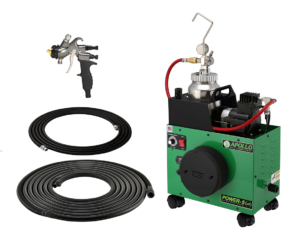
Introduction
If you own a car, it’s essential to understand the basics of how it works, and one of the key components that help you maintain your car is the OBD system. The OBD system is a vital tool for vehicle owners and mechanics to identify potential issues with the vehicle. In this article, we will discuss how to read OBD codes, what they mean, and how to fix the problems.
What is OBD?
The OBD (On-Board Diagnostics) system is a computer-based system that monitors the vehicle’s components and systems for issues. It’s been mandatory on all new vehicles sold in the US since 1996. The system collects data from various sensors and uses that data to detect any issues with the vehicle.
How to Read OBD Codes?
Reading OBD codes is a straightforward process, and you don’t need to be a mechanic to do it. You need an OBD scanner, which is a device that plugs into the OBD port in your vehicle. The OBD port is typically located under the dashboard, near the steering wheel.
Step 1: Locate the OBD Port
The first step is to locate the OBD port. As mentioned earlier, it’s usually under the dashboard near the steering wheel. However, the exact location may vary depending on the make and model of your vehicle. You can check the owner’s manual for the exact location.
Step 2: Connect the OBD Scanner
Once you locate the OBD port, connect the OBD scanner to it. The scanner will communicate with the vehicle’s computer and retrieve any diagnostic trouble codes (DTCs) that may be stored.
Step 3: Read the Codes
Once the scanner retrieves the DTCs, it will display them on the screen. The codes are typically in the format of “PXXXX,” where “P” stands for powertrain, and “XXXX” represents the specific code. There are different codes for different issues, and you can find a list of codes and their meanings online.
Step 4: Interpret the Codes
Interpreting the codes is the most crucial step. The codes provide you with information about the issue with the vehicle. You can use the codes to identify the problem and take the necessary steps to fix it. For example, if the code indicates a problem with the oxygen sensor, you’ll need to replace the sensor.
Common OBD Codes
Here are some of the most common OBD codes and their meanings:
P0101 – Mass or Volume Air Flow Circuit Range/Performance Problem
P0171 – System Too Lean (Bank 1)
P0172 – System Too Rich (Bank 1)
P0300 – Random/Multiple Cylinder Misfire Detected
P0420 – Catalyst System Efficiency Below Threshold (Bank 1)
What to Do with the Codes?
Once you have the codes, you need to take the necessary steps to fix the issues. Depending on the problem, you may be able to fix it yourself or take it to a mechanic. Here are some tips on what to do with the codes:
Check the Simple Things First
Sometimes, the issue may be a simple fix, such as a loose gas cap or a dirty air filter. Before taking the vehicle to a mechanic, check the simple things first.
Research the Problem
You can find a lot of information online about the specific issue with your vehicle. Research the problem and find out what steps you need to take to fix it.
Take it to a Mechanic
If you’re not comfortable fixing the problem yourself or don’t have the necessary tools, take the vehicle to a mechanic. They’ll diagnose the issue and provide you with an estimate for the repair costs.
Related Reading: Ancel Blogs.
Conclusion
Reading OBD codes is a simple process that can help you identify potential issues with your vehicle. It’s a valuable tool for both vehicle owners and mechanics. By understanding how to read OBD codes, you can take the necessary steps to fix the problems and prevent more significant issues from developing.
It’s essential to remember that the codes are only a starting point. They indicate where the problem is, but they don’t tell you what’s causing it. You’ll need to use your knowledge of your vehicle and your research skills to determine the root cause of the problem.
Regularly checking your vehicle’s OBD codes can also help you identify issues before they become significant problems. By catching issues early, you can save yourself time and money in the long run.
In conclusion, understanding how to read OBD codes is an essential skill for any vehicle owner. It’s a straightforward process that can help you identify potential issues with your vehicle, and it’s a valuable tool for both DIY repairs and taking your vehicle to a mechanic. By regularly checking your OBD codes, you can keep your vehicle in top condition and save yourself time and money in the long run.





